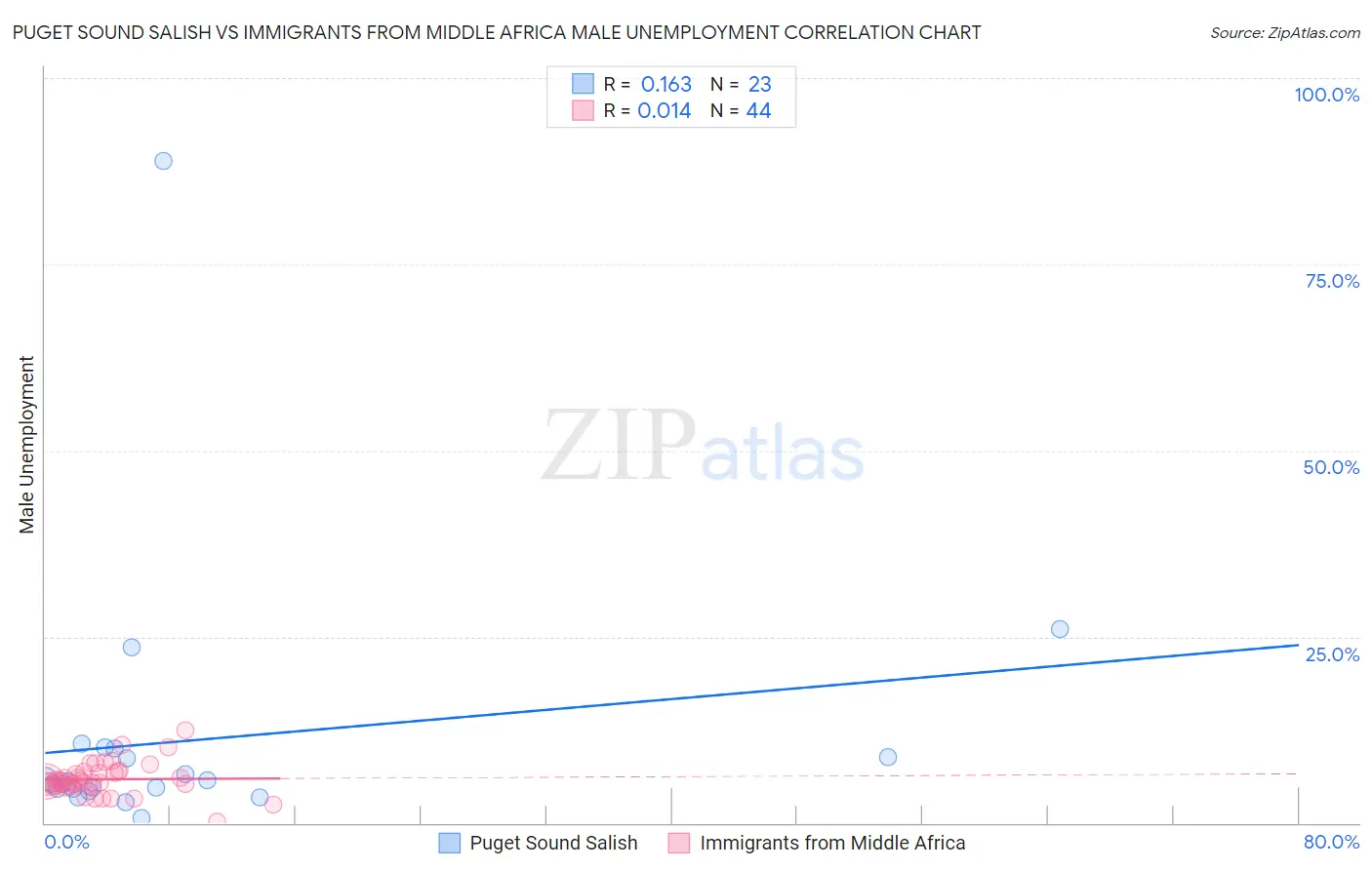Puget Sound Salish vs Immigrants from Middle Africa Male Unemployment
COMPARE
Puget Sound Salish
Immigrants from Middle Africa
Male Unemployment
Male Unemployment Comparison
Puget Sound Salish
Immigrants from Middle Africa
5.5%
MALE UNEMPLOYMENT
5.6/ 100
METRIC RATING
214th/ 347
METRIC RANK
5.5%
MALE UNEMPLOYMENT
8.3/ 100
METRIC RATING
209th/ 347
METRIC RANK
Puget Sound Salish vs Immigrants from Middle Africa Male Unemployment Correlation Chart
The statistical analysis conducted on geographies consisting of 46,067,216 people shows a poor positive correlation between the proportion of Puget Sound Salish and unemployment rate among males in the United States with a correlation coefficient (R) of 0.163 and weighted average of 5.5%. Similarly, the statistical analysis conducted on geographies consisting of 202,406,259 people shows no correlation between the proportion of Immigrants from Middle Africa and unemployment rate among males in the United States with a correlation coefficient (R) of 0.014 and weighted average of 5.5%, a difference of 0.60%.

Male Unemployment Correlation Summary
| Measurement | Puget Sound Salish | Immigrants from Middle Africa |
| Minimum | 0.60% | 0.20% |
| Maximum | 88.9% | 12.5% |
| Range | 88.3% | 12.3% |
| Mean | 11.1% | 5.9% |
| Median | 5.5% | 5.5% |
| Interquartile 25% (IQ1) | 4.6% | 5.0% |
| Interquartile 75% (IQ3) | 10.0% | 6.8% |
| Interquartile Range (IQR) | 5.4% | 1.8% |
| Standard Deviation (Sample) | 18.0% | 2.1% |
| Standard Deviation (Population) | 17.6% | 2.1% |
Demographics Similar to Puget Sound Salish and Immigrants from Middle Africa by Male Unemployment
In terms of male unemployment, the demographic groups most similar to Puget Sound Salish are Ugandan (5.5%, a difference of 0.17%), Samoan (5.5%, a difference of 0.20%), Hmong (5.5%, a difference of 0.33%), Immigrants (5.5%, a difference of 0.37%), and Delaware (5.5%, a difference of 0.42%). Similarly, the demographic groups most similar to Immigrants from Middle Africa are Immigrants from Lebanon (5.5%, a difference of 0.050%), South American Indian (5.5%, a difference of 0.13%), Israeli (5.5%, a difference of 0.17%), Immigrants from Syria (5.5%, a difference of 0.18%), and Hmong (5.5%, a difference of 0.27%).
| Demographics | Rating | Rank | Male Unemployment |
| Immigrants | Philippines | 13.5 /100 | #201 | Poor 5.4% |
| Immigrants | Nonimmigrants | 13.1 /100 | #202 | Poor 5.4% |
| Immigrants | Laos | 13.0 /100 | #203 | Poor 5.4% |
| Guamanians/Chamorros | 12.3 /100 | #204 | Poor 5.4% |
| Immigrants | Costa Rica | 11.4 /100 | #205 | Poor 5.5% |
| Immigrants | Ukraine | 9.9 /100 | #206 | Tragic 5.5% |
| Immigrants | Syria | 9.3 /100 | #207 | Tragic 5.5% |
| Immigrants | Lebanon | 8.6 /100 | #208 | Tragic 5.5% |
| Immigrants | Middle Africa | 8.3 /100 | #209 | Tragic 5.5% |
| South American Indians | 7.6 /100 | #210 | Tragic 5.5% |
| Israelis | 7.4 /100 | #211 | Tragic 5.5% |
| Hmong | 7.0 /100 | #212 | Tragic 5.5% |
| Ugandans | 6.3 /100 | #213 | Tragic 5.5% |
| Puget Sound Salish | 5.6 /100 | #214 | Tragic 5.5% |
| Samoans | 4.9 /100 | #215 | Tragic 5.5% |
| Immigrants | Immigrants | 4.3 /100 | #216 | Tragic 5.5% |
| Delaware | 4.2 /100 | #217 | Tragic 5.5% |
| Immigrants | Albania | 3.6 /100 | #218 | Tragic 5.5% |
| Immigrants | Western Asia | 3.5 /100 | #219 | Tragic 5.6% |
| Portuguese | 3.5 /100 | #220 | Tragic 5.6% |
| Soviet Union | 3.2 /100 | #221 | Tragic 5.6% |